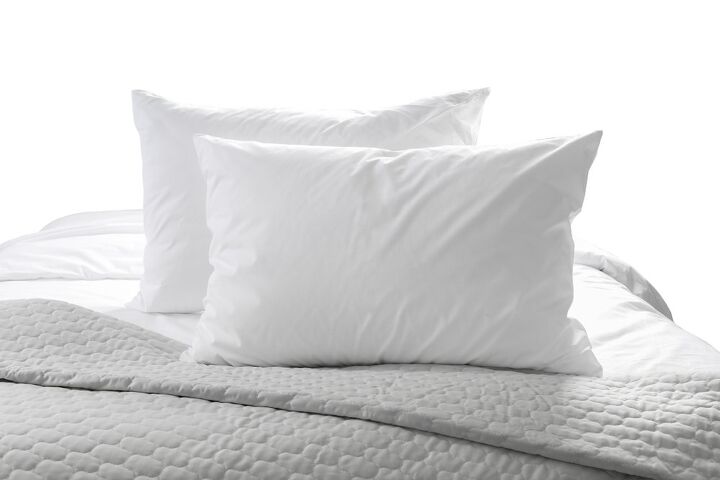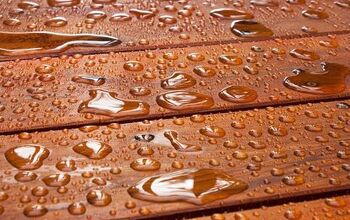How Often Should You Replace Pillows?

Sleeping without a comfortable pillow can mean a rough night's sleep. In a perfect world, pillows would last forever and never lose their comfort. Sadly, that’s not the case. So, how often should you replace your pillows?
You should replace your pillows every 2 years or sooner if they become uncomfortable. Pillows stiffen and become lumpy because of dander, skin oils, sweat, dust mites, and pressure. Musty smells are also bad signs, and they can indicate mold and mildew within your pillow. Make sure to wash your pillowcases at least once every 2 weeks.
You can use vinegar and water to remove musty pillow smells, but that doesn’t solve the cause of the problem. For many people, dirty pillows are bad for the skin, allergies, and respiratory system . Follow along as we explore how often you should replace pillows.
When Should You Throw Away Pillows?
You’ve Used The Pillow For Two Years
According to the Asthma and Allergy Foundation of America (AAFA), you should replace your pillows every two years. It only takes 2 years for pillows to become riddled with dander and bacteria that make them somewhat disgusting. You should be especially quick to replace your pillows within this time frame if you have asthma and struggle with allergies.
This is essential, as you can trigger allergies and respiratory problems if you sleep on a dirty pillow. Pet owners often must replace their pillows sooner if they let their pets sleep on the bed. Your pillow will get dirtier much quicker, and this can make it difficult to sleep comfortably without allergy flare-ups.
Your Pillow Feels Heavier Than It Used To
Have your pillows gradually felt heavier over time? If so, then it may be time to replace them. This is a more sinister sign than you may think, and it typically indicates your pillow is filthy.
Sweat, saliva, dead skin, and even the oil in your skin and hair can make your pillow denser over time. You don’t likely want to sleep on a pile of dead skin and sweat, but many people do for way too long. The oils that get trapped in your pillow can cause skin problems, such as acne breakouts.
Lumps In Your Pillow
There is nothing comfortable about sleeping on a lumpy pillow, and it can be bad for your neck. Lumps form in pillows due to debris and moisture that accumulate over time. The material in your pillow can also break apart and morph after years of use.
These lumps often consist of chunks of material that separate within your pillow. That combined with dust mites, sweat, and debris makes these lumps hard to get rid of. In minor cases, you can massage your pillow to make the material smoother.
However, this is often a temporary fix if your pillow is old and contains years of sweat and dead skin. You can also beat your pillows with tennis balls to make them more comfortable. These are temporary fixes, but they’re better than nothing if your pillow is under 2 years old.
Your Pillow Smells Musty
Does your pillow smell musty and even moldy? This happens for many reasons, such as sweating overnight. Moisture gets trapped within your pillow and has no way to easily come out. Over time, the smell will progressively become worse.
Mold can also grow within your pillow as it is the perfect breeding ground for mold spores. The inside of your pillow doesn’t get much light, and plenty of moisture gets trapped within it. This makes it all too easy for mold and mildew to grow and thrive within the fabric.
You can take measures to reduce the smell with a household mixture of vinegar and water. However, this will mostly just mask the odor and won’t solve the root of the problem. Instead, you should simply replace your pillows, so the mold and musty odors don’t become worse.
Lack Of Firmness
While pillows can become denser because of sweat and dead skin and may no longer feel firm, they can weaken over time from the consistent pressure of your head. This can be quite uncomfortable, and you may wake up with a headache and sore neck.
No matter how much you fluff your pillow, you won’t have great results after two years. That’s especially true if your pillow is lumpy because of dust mites. In that case, the problem will only get worse until you replace the pillow.
Your Pets Lay On Your Pillows
Nothing is more comfortable than laying in bed with your pets. While it’s fun to spoil our pets, it isn’t hygienic to let them lay on your pillows. You can’t always control this if your pets are allowed to wander around your home.
In that case, it’s safe to assume that your pets spend more time on your pillows than you realize. Pet dander can damage a pillow, and it will also make the pillow smell worse. Wash your pillowcase more often and limit your pet’s access to your pillow if they frequently lay on it.
Stubborn Stains
Sleeping on a stained pillow can leave anyone feeling gross. You may not think about your pillow’s stains until you change the pillowcase and see them. Dark stains from makeup and yellow stains are disgusting to look at for most people.
They may simply seem like cosmetic problems, but the stains are bad signs of your pillow’s health. If your pillow contains enough sweat and oil to be stained, then it’s also likely affecting the inner material. Take the stains as a sign that your pillow is going downhill and prepare to replace it.
You Can Easily Fold It
Have you ever folded a new, healthy pillow? When you fold a new pillow in half, it typically bounces back up and returns to its original position. However, an old, worn-out pillow won’t return to its original position. If it does bounce back, it will take much longer than it should.
Sure, you won’t likely ever need to fold your pillow for any reason, but it’s a great way to check how durable your pillow is. This indicates that the material within the pillow is overly weakened by sweat, dust mites, dead skin, and oils. You’ll sleep much more comfortably if you replace it with a new pillow.
How Often Should You Wash Your Pillowcase?
You should wash your pillowcase every 2 weeks or sooner if you must. Pillowcases take on just as much sweat and oil from your skin as the clothes you wear throughout the day. Washing the case won’t clean the pillow itself, but it’s better than nothing.
Dirty pillowcases are bad for your skin, and even your eye health. For example, the oils in your pillowcase can cause an acne outbreak if you have sensitive skin. You can also get a sty in your eye from a dirty pillowcase. That’s especially true if you let your pets lay on your pillows.
Summing It Up
Ideally, you should replace your pillows every 2 years, if not sooner. Pillows accumulate dead skin, sweat, oil, dust mites, and dander over time, which weaken them. Wash your pillowcases every two weeks and replace your pillows as soon as possible if they have stubborn lumps.
Related Guides:

Nick Durante is a professional writer with a primary focus on home improvement. When he is not writing about home improvement or taking on projects around the house, he likes to read and create art. He is always looking towards the newest trends in home improvement.
More by Nick Durante

























![10 Most Dangerous Neighborhoods in Baltimore [Updated]](https://cdn-fastly.upgradedhome.com/media/2023/07/31/9075655/10-most-dangerous-neighborhoods-in-baltimore-updated.jpg?size=350x220)

